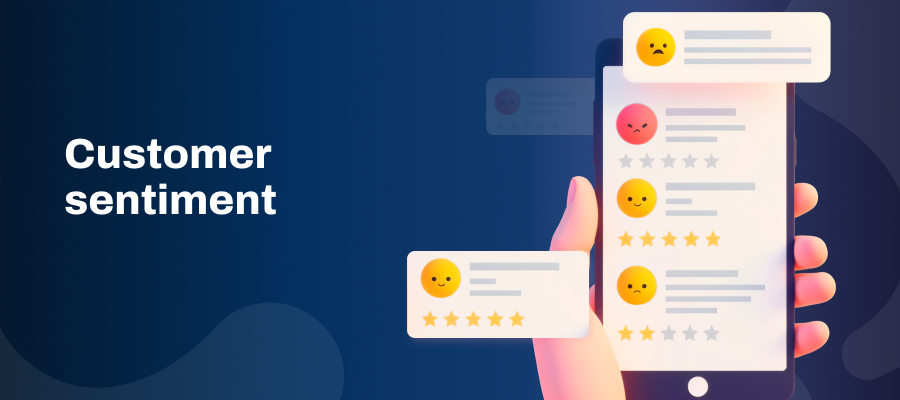Cloud Contact Center with Computer Telephony Integration (CTI) brings together the agility of the cloud and the power of integrated telephony to transform customer engagement. As customer expectations continue to rise in 2025, the ability to deliver fast, context-rich, and consistent support across channels has become a baseline requirement. A cloud-native CTI foundation helps you meet that bar with less complexity, more control, and measurable impact on customer satisfaction and operational performance.
1. Enhanced Customer Experience with Integrated Data
CTI bridges your telephony and customer data so agents never have to alt-tab between systems or ask customers to repeat information. By surfacing the right context at the right moment, it streamlines every interaction and elevates the experience.
- Instant screen-pop with context: When a call connects, the agent sees the customer’s profile, recent interactions, open cases, and past purchases, enabling personalized greetings and faster resolution.
- Unified history across channels: CTI ties together voice, SMS, chat, email, and social conversations so agents always know what happened before the call and what needs to happen next.
- Click-to-call and in-app dialing: Agents initiate calls from within CRM or helpdesk records, reducing misdials and improving productivity.
- Real-time data sync: Notes, dispositions, call outcomes, and recordings automatically attach to the customer record, keeping your systems accurate without manual double entry.
- In-call guidance: As of 2025, AI-assisted prompts, dynamic scripts, and knowledge suggestions during live conversations are common, helping agents answer confidently and consistently.
Result: Customers feel recognized and understood, agents resolve issues in fewer steps, and supervisors see fewer escalations and repeat calls.
2. Scalability and Flexibility
Cloud Contact Centers allow you to right-size operations at speed. Whether you’re handling seasonal surges, launching a new product line, or expanding into a new region, CTI in the cloud adapts without heavy lift or downtime.
- On-demand capacity: Add or remove seats quickly to match demand peaks and valleys—no waiting for hardware procurement or site build-outs.
- Geographic reach without footprint: Stand up new locations or remote pods with minimal setup; agents only need a browser and secure credentials.
- Omnichannel by design: Layer new channels—voice, messaging, or social—without re-architecting your stack, and route them through a single policy framework.
- Open APIs and prebuilt connectors: Integrate with your CRM, ticketing, and workforce tools using standard adapters, avoiding custom code that’s hard to maintain.
- Resilience at scale: Cloud architectures offer multi-region redundancy and automated failover to maintain service continuity during local outages or traffic spikes.
This elasticity means your contact center grows with the business and can pivot faster than traditional on-premise systems.
3. Remote Workforce Enablement
Cloud-based CTI makes remote and hybrid models first-class citizens. By moving voice and routing intelligence to the cloud, you can activate distributed teams while ensuring a secure, consistent agent experience.
- Work from anywhere: Browser-based, WebRTC, or softphone options enable agents to log in securely from home or satellite offices using standard devices.
- Secure access and governance: Enforce SSO, MFA, IP whitelisting, and role-based permissions. Granular access controls and audit trails help safeguard customer data.
- Supervisor visibility and coaching: Live monitoring, whisper, and barge capabilities keep quality high even when teams are distributed.
- Consistent tools and workflows: The same CTI features and knowledge resources are available to every agent, removing the gap between in-office and remote performance.
- Business continuity built in: If disruption affects a location, agents can switch to remote work without interrupting service, preserving SLAs and customer trust.
With a cloud CTI foundation, remote operations feel seamless for customers and manageable for supervisors and IT.
4. Improved Operational Efficiency
Automation and intelligent routing reduce handle time for routine requests and direct complex issues to the right experts. CTI layers contextual information and AI assistance into the agent desktop so teams can do more in less time, with fewer errors.
- Smart routing and skills management: Direct customers to the best-qualified agent based on skills, language, intent, or customer segment. Priority calls can be fast-tracked to specialized queues.
- IVRs and self-service deflection: IVRs and voicebots handle balance checks, order status, and password resets, reserving agents for high-value conversations.
- Agent assist and dynamic guidance: Real-time suggestions, knowledge snippets, and compliance prompts reduce training time and improve consistency.
- Automated wrap-up: Dispositions, tags, and follow-up actions are captured and synced to core systems, reducing after-call work.
- Real-time and historical analytics: Dashboards show queue health, service levels, and agent productivity. As of 2025, features like call transcription and sentiment indicators help quality teams pinpoint coaching opportunities faster.
These capabilities collectively boost First Call Resolution (FCR), shrink Average Handle Time (AHT), and increase agent utilization—without sacrificing quality or empathy.
5. Cost-Effectiveness
Moving CTI to the cloud shifts heavy capital expenditures to an operating expense model and lowers the ongoing cost of ownership. You gain predictable economics, faster innovation, and fewer surprises.
- Lower upfront investment: No PBX racks to buy, no specialized hardware to maintain, and fewer site dependencies.
- Pay-as-you-use model: Scale licenses and calling capacity up or down to align with demand, avoiding stranded costs.
- Reduced IT overhead: Automatic updates and centralized administration minimize maintenance windows, patching, and manual version upgrades.
- Faster time-to-value: Prebuilt CRM and helpdesk connectors accelerate rollout, so teams realize benefits quickly and training remains light.
- Built-in compliance efficiencies: Cloud providers typically offer standardized security controls and certifications, reducing the burden of audits and bespoke controls.
Over time, these efficiencies compress total cost of ownership while improving service reliability and agility—an ROI combination that on-premise stacks struggle to match.
What to Look For in a Cloud CTI Platform
Choosing the right partner matters. While the core benefits above are universal, the best outcomes come from a platform built for enterprise scale and modern CX practices. Consider these essentials:
- Deep CRM and helpdesk integrations: Native, two-way syncing for contacts, cases, custom fields, and activities.
- Omnichannel routing from one brain: Consistent policies across voice and digital channels with unified reporting.
- AI-readiness: Agent-assist, transcription, and configurable prompts that augment—not replace—human service.
- Global voice quality: Carrier-grade connectivity, call recording, and options to localize numbers and call flows.
- Enterprise security: Encryption in transit and at rest, SSO/MFA, audit logs, and robust data residency options.
Ameyo by Exotel brings these capabilities together so your teams can focus on customers instead of tooling.
Conclusion
Switching to a Cloud Contact Center with CTI is a strategic move that pays off in customer experience, operational agility, and cost control. By unifying customer data with telephony, scaling on demand, enabling remote work, automating routine tasks, and simplifying your cost model, you set your organization up to exceed modern expectations while operating more efficiently. As of 2025, organizations that embrace cloud CTI aren’t just keeping pace—they’re delivering faster, more personalized service at scale and building durable, adaptable CX foundations for whatever comes next.




